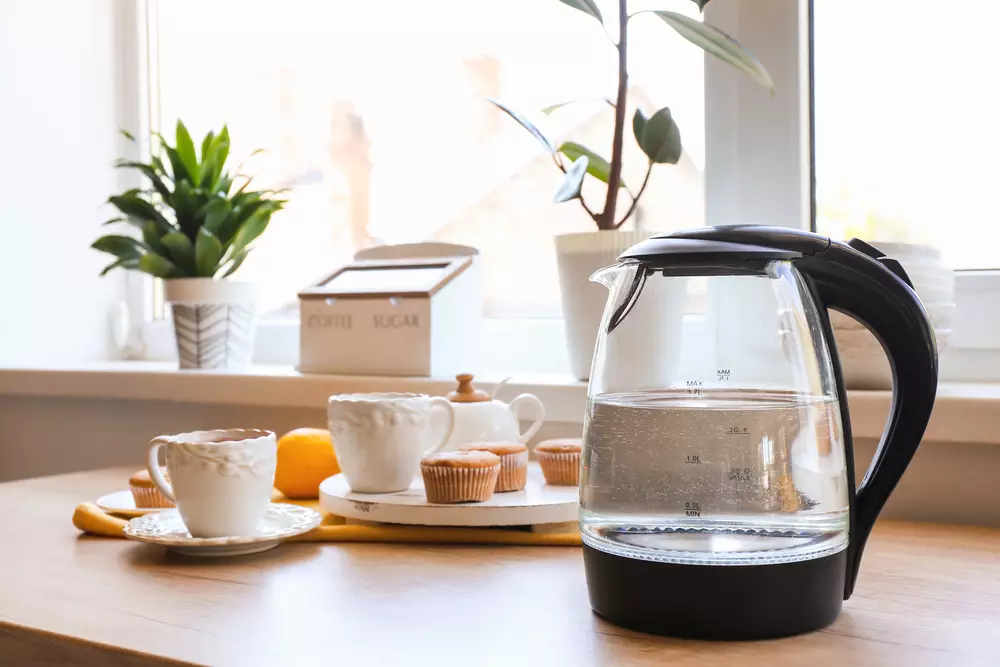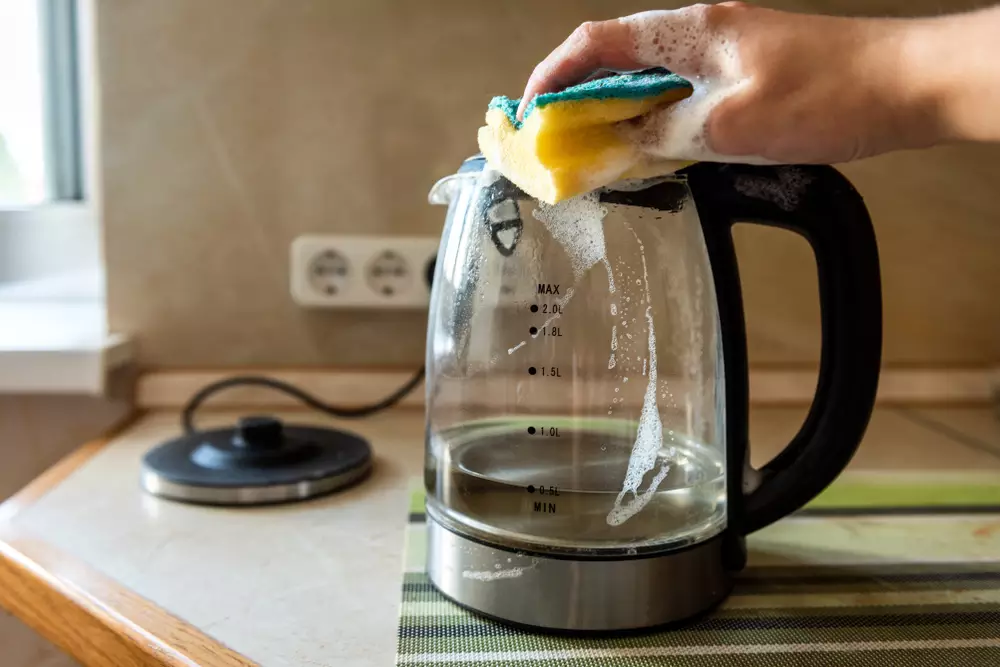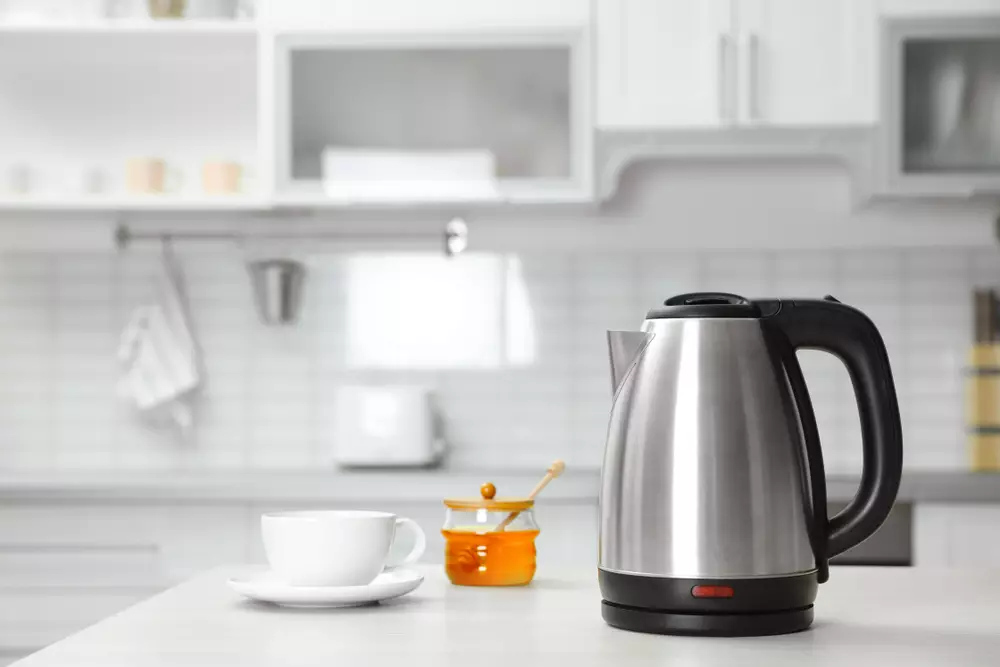Electric kettles have become a popular and convenient appliance for boiling water quickly, as they are faster and more energy-efficient than traditional stovetop kettles. It is an essential appliance in many households and offices, providing a quick and easy way to boil water for tea, coffee, or other hot beverages. However, the buildup of limescale, mineral deposits, and other residues can be a common problem that can affect the taste of your tea or coffee and even damage your appliance in the long run. So, how to clean an electric kettle?
Cleaning your electric kettle regularly not only helps to remove these unsightly residues but also keeps your kettle functioning at its best. There are a lot of cleaning methods to choose from depending on the severity of the buildup, and it’s important to use safe and effective cleaning solutions to avoid any damage to the kettle’s heating element or other parts.
With the right techniques, cleaning an electric kettle can be a simple and hassle-free process, and it’s worth taking the time to do it regularly to keep your kettle in top condition. In this article, we will provide you with a step-by-step guide on how to clean an electric kettle effectively and safely.
Why Cleaning an Electric Kettle Is Important?
Cleaning an electric kettle is important for several reasons. So firstly, the buildup of limescale and other residues can affect the taste and quality of your hot beverages. Limescale can impart a bitter or metallic taste to your tea or coffee, and it can also reduce the effectiveness of the kettle’s heating element, resulting in longer boiling times and higher energy consumption.
Additionally, if left uncleaned, limescale and other residues can accumulate to the point where they become difficult to remove, leading to permanent damage to the kettle’s interior or exterior. Regular cleaning of your electric kettle not only ensures that your hot beverages taste better, but also helps to extend the lifespan of your appliance and keep it functioning at its best.
Furthermore, a clean electric kettle is more hygienic and reduces the risk of bacteria or other contaminants building up inside the appliance.

How to clean an electric kettle using vinegar?
Cleaning an electric kettle using vinegar is a simple and effective method that can help to remove limescale and other mineral deposits. Here are some steps to follow:
- Fill the kettle about halfway with equal parts water and white vinegar.
- Allow the mixture to sit in the kettle for 1–1.30 hours.
- You can also boil the mixture for a few minutes if the buildup is particularly stubborn.
- After the mixture has sat for the desired amount of time, empty it from the kettle.
- Rinse the kettle thoroughly with clean water, making sure to remove all traces of vinegar.
- Fill the kettle with clean water and boil it once or twice to remove any remaining vinegar residue.
- Empty the water and wipe the kettle dry with a clean cloth.
#Note: Avoid using apple cider vinegar or any other type of vinegar with a strong odor, as it may leave a residue that affects the taste of your hot beverages.
How to Clean an Electric Kettle Using Lemon Juice?
Cleaning an electric kettle using lemon juice is another effective and natural method that can help to remove limescale and other mineral deposits. Here are the steps to follow:
- Fill the kettle about halfway with water.
- Squeeze the juice of one or two lemons into the water and add the lemon peels.
- Bring the mixture to a boil and allow it to simmer for 15–20 minutes.
- Turn off the kettle and let the mixture cool for 30 minutes to an hour.
- After the mixture has cooled, empty it from the kettle and discard the lemon peels.
- Rinse the kettle thoroughly with clean water, making sure to remove all traces of lemon juice.
- Fill the kettle with clean water and boil it once or twice to remove any remaining lemon juice residue.
- Empty the water and wipe the kettle dry with a clean cloth.
#Note: Lemon juice can also leave a residue that affects the taste of your hot beverages, so it’s important to rinse the kettle thoroughly after cleaning.
How to Clean an Electric Kettle Using Baking Soda?
Cleaning an electric kettle using baking soda is a gentle yet effective method that can help to remove limescale and other mineral deposits. Here are the steps to follow:
- Mix 1–2 tablespoons of baking soda with water to form a paste.
- Apply the paste to the inside of the kettle, focusing on areas with heavy buildup.
- Fill the kettle with water, making sure not to exceed the maximum fill line.
- Bring the mixture to a boil and allow it to simmer for 15–20 minutes.
- Turn off the kettle and let the mixture cool for 30 minutes to an hour.
- After the mixture has cooled, empty it from the kettle.
- Use a soft-bristled brush or sponge to gently scrub the inside of the kettle, paying extra attention to areas with heavy buildup.
- Rinse the kettle thoroughly with clean water, making sure to remove all traces of baking soda.
- Fill the kettle with clean water and boil it once or twice to remove any remaining residue.
- Empty the water and wipe the kettle dry with a clean cloth.
#Note: Baking soda is a mild abrasive and can scratch the surface of the kettle if used too vigorously. Use a soft-bristled brush or sponge and scrub gently.
How to Clean The Exterior of an Electric Kettle?
Cleaning the exterior of an electric kettle is important for maintaining its appearance and ensuring that it functions properly. Here are the steps to follow:
- Unplug the kettle and let it cool completely.
- Wipe the exterior of the kettle with a damp cloth to remove any surface dirt or grime.
- For stubborn stains, mix a small amount of dish soap with water to create a soapy solution.
- Dip a soft sponge or cloth in the soapy solution and gently scrub the exterior of the kettle, being careful not to scratch the surface.
- Rinse the kettle with clean water and wipe it dry with a clean cloth.
- For stainless steel kettles, you can use a mixture of white vinegar and water to remove any hard water stains or discoloration. Apply the mixture with a soft cloth and wipe dry with a clean cloth.
- For plastic kettles, avoid using harsh chemicals or abrasive cleaning tools that can scratch or damage the surface.
#Note: Avoid submerging the kettle in water or using any abrasive cleaning tools that can damage the surface or electrical components.

Tips for Maintaining an Electric Kettle’s Cleanliness and Performance
Regular maintenance can help to extend the life of your electric kettle and ensure that it functions properly. Here are some tips for maintaining an electric kettle’s cleanliness and performance:
- Empty the kettle after each use to prevent mineral buildup.
- Clean the kettle regularly using one of the methods described above to remove mineral deposits and other buildup.
- Avoid using harsh chemicals or abrasive cleaning tools that can scratch or damage the surface of the kettle.
- Wipe the exterior of the kettle with a damp cloth after each use to remove any surface dirt or grime.
- Use filtered or distilled water instead of tap water to reduce mineral buildup.
- Do not overfill the kettle beyond the maximum fill line, as this can cause the kettle to boil over and leave residue on the heating element.
- Check the manufacturer’s instructions for any specific cleaning or maintenance recommendations for your electric kettle.
- Regularly descale the kettle if you live in an area with hard water.
- Avoid using the kettle for purposes other than boiling water, such as cooking or warming food.
- Store the kettle in a dry place and avoid exposing it to extreme temperatures or moisture.
By following these tips, you can help to maintain your electric kettle’s cleanliness and performance and ensure that it lasts for years to come.
Conclusion
Cleaning your electric kettle regularly is essential for maintaining its performance and extending its lifespan. The buildup of mineral deposits can affect the taste and quality of the water and even damage the heating element. Using natural cleaning agents such as vinegar, lemon juice, or baking soda can effectively remove mineral buildup and other deposits from the interior of the kettle.
In addition to cleaning, regular maintenance, and following the manufacturer’s instructions can help to keep your electric kettle functioning properly for years to come. By incorporating these practices into your routine, you can ensure that your electric kettle remains clean, efficient, and safe to use.
